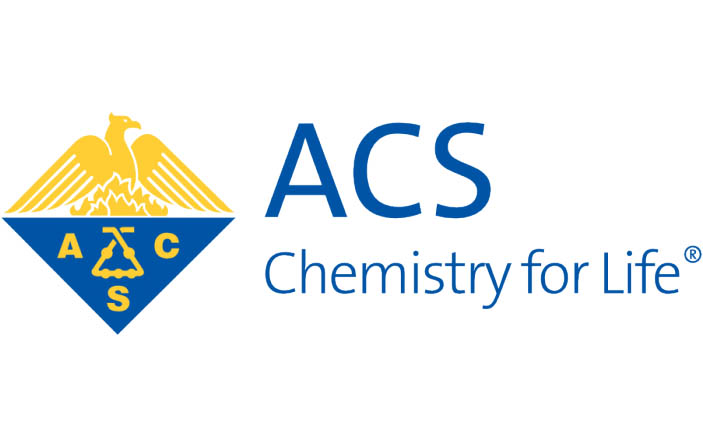On 21 September, the Publications Division of the American Chemical Society (ACS) announced a new twist on the article processing charge (APC) model of funding open-access publishing. Their new program involves what they call an article development charge (ADC), which is designed to “provide authors a new option to satisfy funder requirements for zero-embargo green open access.” Sarah Tegen, PhD, Chief Publishing Officer of ACS Publications, agreed to respond to a few questions about this new program.

ACS believes that “more than 90%” of the authors it publishes “have a simple and funded pathway to publish gold OA (OA) in ACS journals.” I’m curious about how you arrived at that statistic – was it via an author survey? Can you tell us more about how you gathered that data?
ACS has invested significantly in technology and processes to determine an author’s institutional affiliation and funder identity. We cross match this information to our database of ACS-negotiated read and publish agreements and funder access requirements. Nearly three-quarters (73%) of authors who are subject to an OA mandate have a funded solution through an institutional read and publish agreement, and one-fifth (21%) through OA funding support.
How exactly does payment of the ADC work? At what point in the process is the charge imposed?
Funders who require researchers to immediately post the accepted manuscript usually recommend that standard language (often referred to as rights retention strategy or RRS) is included either in the manuscript or cover letter. If this documentation is included with the manuscript when it is submitted to an ACS journal, our team will reach out to the author and provide four clear paths to OA, with the zero-embargo green OA process as an option. Payment of the ADC will be requested once the submitted manuscript is sent for external peer review and will be due prior to the completion of the peer review.
Will the author have the option of withdrawing at this point, if s/he doesn’t have funds to cover the ADC? Or does the author commit to the ADC payment before the manuscript is sent out for review?
We expect a very small number of authors to elect the ADC — in the range of about 200 per year out of 200,000 annual manuscript submissions. If an author cannot pay the ADC, they can continue on their publishing journey, but they will need to wait to post their accepted manuscript for 12 months.
Is the ADC the same amount as the APC paid by funded authors? If not, how is the difference calculated?
The ADC is a flat fee of $2,500 for our hybrid journals, and it covers the costs associated with the many publishing services provided from submission to final editorial decision. This includes organizing, maintaining, and investing in the high-quality scholarly peer review process and multiple other services provided by an expansive global network of editors and reviewers. These costs are significant, comprising more than 50% of the overall cost of publishing the final version of record.
Unlike an article publishing charge (APC), the ADC does not cover expenses related to final production, digital distribution, discovery, and hosting of the version of record or maintaining post-publication updates. For those authors who later decide to publish fully OA, the amount of the ADC will be deducted from the cost of the gold APC. Authors will not pay more than the APC required for gold OA. ADC waivers or discounts will be automatically applied to papers from corresponding authors from all countries that currently receive special country pricing for APCs.
Is ACS’s APC also a flat fee, or does it vary by journal? (And if the latter, what is the range of APC prices?)
The APC for our hybrid journals is $4,500, with discounts for ACS members and authors from countries that currently receive special country pricing.
To ask what is such an obvious question that it might be stupid: how does an unfunded author (who therefore presumably can’t afford an APC) benefit from being charged an ADC instead?
Assisting authors to get published is our North Star, and we’re introducing this ADC option to help authors navigate shifting funder mandates. Funders, institutions, and publishers agree there is a real cost to scholarly publishing, and choosing an OA option is entirely voluntary. The ADC ensures the long-term integrity and quality of content published in ACS journals. We also provide cost-free pathways to publish for all authors.
Through the read and publish agreements we have with thousands of institutions worldwide, we have shielded authors from the costs of meeting funder requirements for gold OA. These enable authors to post the final version of record to repositories immediately after publication. ACS Publications already allows those authors who cannot publish via the gold OA route to post the accepted manuscript to a repository 12 months after publication at no cost. Authors may also choose to publish through subscription access journals at no cost to them.
For authors not covered by a read and publish agreement or another pathway, our zero-embargo green OA pathway will provide an additional option to immediately share the accepted manuscript while offsetting the costs incurred to ensure the quality, value, and integrity of the research during the publishing process.
Discussion
23 Thoughts on "The American Chemical Society Offers a New Twist on the Article Processing Charge: An Interview with Sarah Tegen"
I am rather curious. How many additional costs have publishers had to incur as a result of the implementation of Open Access (OA)? Have OA costs to authors been passed on in the form of higher Article Processing Charge (APCs)? Or has the APC reached a point of resistance? I only ask because it seems to me, that publishers are scrambling to maintain margins. And, that the only way to sustain margins is to publish more articles and/or to add services no one knew they needed!
Lastly, in eight paragraphs we have used OA and APC 40 times! Are we talking only to ourselves? By the way, if one googles APC the first entries all refer to Armored Personnel Carriers.
This is a cynical corporate twist to the already unequitable and unsustainable APC system, charging authors to publish green OA (!) without embargo. It basically uses the research funders’ requirements against the researchers and monetises these requirements (e.g. by Plan S). Access to publicly funded research results should be open and immediate by default and instead of imposing a flat fee APC/ADC, costs should be made transparent so that authors know exactly how much they’re paying for what.
Thank you for asking the last question! I find the response “choosing an OA option is entirely voluntary” to be noticeably at odds with one ACS’s main rationale for starting the ADC in the first place – that funders are requiring researchers to publish Open Access. To argue that Open Access is voluntary is a fallacy – funders and institutions around the world mandate OA in their policies. I suppose technically authors have a “choice” not to accept funding from organizations requiring OA…but surely we can see the fundamental flaw in logic here.
I still do not understand the difference between what an author gets with APDs vs APCs. With APDs I believe they can post their published article in their institutional repository. Can nonsubscribers read the article that way? How are APDs fulfilling Plan S to make the article OA to all? What are the four clear paths to OA? Are they 1) pay nothing and post after 1 year embargo, 2) pay $2,500 in APDs and post now, 3) pay $4,500 in APCs and ? What would motivate an author to pay APCs if they’ve paid APDs and the article has been posted? Please simplify the difference. Thanks.
One question not asked here is why the decision was made to charge the ADC before, rather than after acceptance.
At surface level, it perhaps seems a straightforward proposition – authors are asked to pay a price for pre-acceptance publishing services only, which they will receive regardless of whether their article is accepted or not. And if accepted, they will be provided with the product of those services only, which they can then share.
But I’m having a hard time squaring the circle for at least two reasons:
1) Articles for which an ADC is paid still incur post-acceptance costs, as they will still receive ‘final production, digital distribution, discovery, and hosting of the version of record or maintaining post-publication updates’. Is the expectation that these costs are covered by remaining subscription / per article sales income and thus represent the value-add of producing a publisher version – compared to the existence of an immediately shared AAM with a CC-BY license?
2) If the APC-price of $4500 is supposed to represent all costs incurred (+ surplus received!) of one published article, and the ADC is calculated to represent the 50% pre-acceptance costs of that $4500, it would make sense for the ADC, like the APC, to be paid after acceptance, as the costs for publication services for eventually non-accepted articles are included in that cost calculation already. If an ADC is asked of articles before peer review, I would expect it to be lower, depending on the acceptance rate of articles sent to peer review, as in that case the pre-publication costs (which remain the same) are recouped from a larger number of articles. As an example, in the current setup, with a hypothethical acceptance rate after peer review of 50%, ADC would generate $5000 per accepted article, more than the current APC.
It can probably be argued that these are calculations at scale that do not apply when only a very small proportion of submissions is expected to chose the ADC route. But in that case, that’s perhaps also a self-fulfilling prophecy – with the ADC model being more of a deterrent than an enticement for authors?
I appreciate your—and everyone’s—comments and questions. You’re absolutely right that the scale here is key. Introducing the article development charge is a way for ACS Publications to sustainably meet the requirements of this small number of authors who need to publish green OA without a read and publish agreement between their institution and ACS. The introduction of this additional option is more of an attempt to evolve than to grow.
The cost and value of our publishing services between manuscript submission and final acceptance are a significant slice of the pie that’s traditionally been covered by subscriptions. The investments required to continue to earn the trust of the scientific publishing community extend beyond what we illustrate as stages in the publishing process.
I encourage people with more questions to visit our webpage (https://acsopenscience.org/researchers/zero-green-oa) and to explore our various OA publishing options (https://acsopenscience.org/researchers/zero-green-oa/oa-pathways/).
I am trying to wrap my mind around what sounds like an attempt to turn Green OA into a form of Gold. If I understand correctly the ADC is charged before an author(s) assign any rights to ACS. In effect, this is a submission fee charged to authors at institutions without an ACS read and publish deal. Requests from authors to pay this fee will most likely wind up with the library, placing pressure to negotiate a read and publish agreement. Not very friendly, but possibly effective. (I am also dubious that 73% of authors are covered by a RAP–at least domestically–as the ACS site only lists 19 such agreements in the US.) Finally, I wonder how the ADC will fly for authors at institutions with OA mandates/policies that reserve author’s rights to place a post-print in an institutional repository. I expect pushback from those saying you cannot charge them for something they retain the rights to do.
I think its 73% of authors who are currently subject to an OA mandate … not 73% of authors.
Thanks, Lisa, for the clarification. I get what you are saying. There are a number of excellent questions and critiques in the comments. My hope is ACS will review them carefully. I still perceive this fee as part of a negotiating strategy by ACS, and a rights question that challenges Green OA.
Thanks, Rick for this post, and Sarah responding to the questions.
On the numbers quoted above (200 papers @ $2500) this will generate about $500K, which seems like a lot until you consider that ACS “Information Services” (which seems to be the euphemism for publishing) brought in $667 million in 2022, which basically powered their $65.2 million “change in net assets” (non-profit way of saying profit) that year.
So this will add .07% to their revenue, minus whatever it costs to administer it. It does feel like a deterrent rather than a solution to a real problem.
Note that Information Services at ACS includes traditional scholarly journals publishing at ACS Publications and the significantly larger (in revenue) CAS group. Also note that ACS themselves defined this as an edge use case of authors with funder requirements not covered by TA’s.
I think the reason most of the commenters above seem puzzled is because they are assuming that the publisher is operating in good faith.
It seems to me like you’re assuming publishers are the big bad oil barons who are destroying the planet because they’ll all be dead before it all implodes…but that role is actually filled by academics who expect others to build and maintain infrastructure for free…
If you were to take the long view, allowing people to publicly post peer-reviewed articles for free will actually make the entire peer review and publishing system implode. If everything is free, why bother with a publisher at all? (OH WAIT, that’s what preprints are all about!) Which leads to publishers ceasing to exist…which leads to research losing all integrity standards.
I have been involved in STEM publishing for some 30 years and ACS is a most honorable organization.
But “The APC for our hybrid journals is $4,500” seems hugely excessive. There seems to have been slippage into the $4ks APC recently for Elsevier and other big publishers too, right across into the poorly-funded humanities and social sciences. I would encourage authors to review whether this is really “value for money” when scholar-led journals can produce and curate high quality articles and figures using a few hours of volunteer or paid labor, and they charge nothing, or far less. In my field, there are fortunately abundant places to publish with no APCs, scholar-led and with no to almost-no commercial interest. My big R1 university outside North America will cover some APCs, but ethically, they are too high for me when when so many colleagues cannot afford them and have no read&publish deals to draw on.
It is not a slippage but only a reflection of costs and projected costs of growth. It costs money to stay ahead of the game, ie – new computers, maintenance and cost of personal, etc. The problem with business (publishing is a business profit or not) is that it costs more and more to stay in the game. For instance, new equipment and vendor increases not to mention R&D. The problem with OA is that someone has to pay for open! I would guess that within two years programs will be needed to cope with AI – it is the old MAD comics spy vs spy – and cost to publish will exceed $5,000. In short, there is no free lunch!
One of the big differences with OA is that under a subscription model you can still monetize older content — if it remains behind subscription access restrictions, you’re still able to sell it and bring in revenue to pay for its upkeep (and upgrades with new PIDs, new technologies, etc.). Because OA models are largely transactional, the publisher earns from the article once, upon publication, and thereafter it becomes a cost center, being dragged behind the program in perpetuity, costing money but never bringing any more in. There’s an interesting argument for journals to stop hosting older OA papers and push those costs onto repositories like PubMed Central.
The unintended consequences of OA are many. It has become a monster that has to be constantly fed. The model was not carefully considered and the ecosystem is now being challenged. In a social Darwinian sense, only the cleaver and strong will survive. As a result, there will be fewer players in the ecosystem and an oligopoly is being created.
I didn’t see anything about what happens to the ADC for submissions rejected after peer review? Refunded to the authors? Forfeited to ACS?
That seems the only way it could work. But unlike eLife’s full dissemination model, ACS will still have binary accept/reject decisions. One outcome will likely be that authors will be more discriminating in submissions. For example, I’ve submitted a manuscript to ES&T knowing that it was on the fringe of their scope and if rejected, no loss besides some weeks and reformatting. If I have to bet the ADC upfront, I would be a lot more careful and take more time with presubmission review and polishing. In other words, journals with ADCs will likely see better quality submissions that are more central to their scope.
Yes, but to be fair, if it only applies to 200 out of 200,000 submissions, it’s not going to make much of a dent.
To me, the intention here is to make the RRS route the least attractive route to authors. 12-month embargo Green OA is essentially free, Gold OA requires a payment, but only if the paper is accepted and published, while immediate Green OA via RRS requires a payment and entails a risk that the paper will not be accepted and published and the payment will essentially be for naught.
https://www.ce-strategy.com/the-brief/out-of-reach/#3



